Spray painting a car can be a great way to give it a fresh new look without breaking the bank. While it may seem daunting, with the right tools and techniques, anyone can learn how to spray paint their car.
Whether you’re looking to touch up a few scratches or completely change the color of your vehicle, spray paint can be a fun and rewarding project. Spray painting a car is no easy feat. Whether you want to touch up some small areas or overhaul your car, learning spray paint a car can save you significant money.
With the right technique and attention to detail, you can achieve professional-grade results in the comfort of your own garage. We will guide you through how to spray paint a car easily. We’ll cover everything from preparing your car for painting, sanding techniques, and selecting the right products to avoid common mistakes.
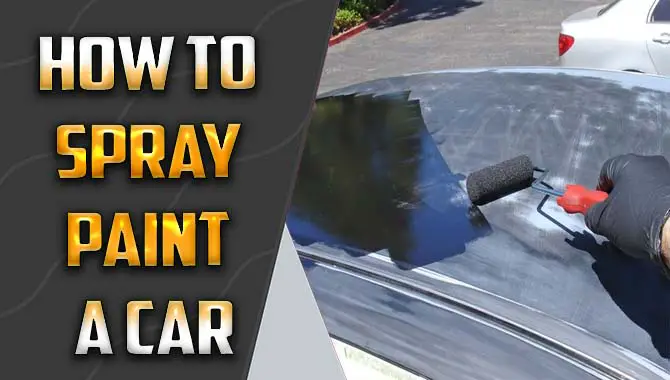
17 Steps On How To Spray Paint A Car
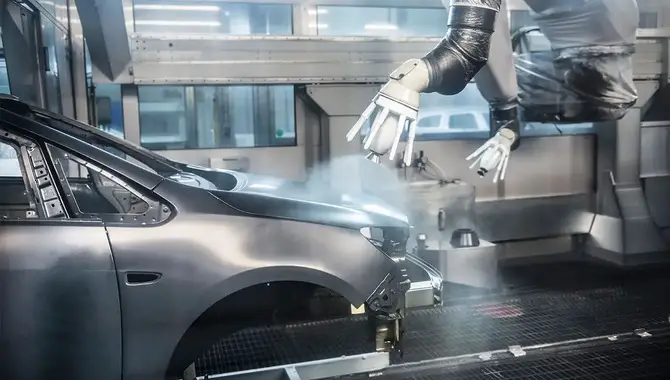
Before you start spray painting your car, it is important to know what you’re getting into. Spray painting a car requires patience, attention to detail, and the right equipment. Before you begin, you’ll need to do some prep work, including removing any rust or dents from your car’s surface.
Additionally, ensure you have the right protective gear to keep yourself safe while working with paint and chemicals. Once you’ve got all your tools and safety gear ready, it’s time to get started on the actual painting process.
Remember, take your time and don’t rush through any steps; a quality paint job takes time and effort. Spray painting a car can be a great way to give it a fresh, new look. However, it’s important to know what you’re doing before you start spraying away. Here are some key steps to follow on how to spray paint a car:
1. Preparing Your Car For Spray Painting
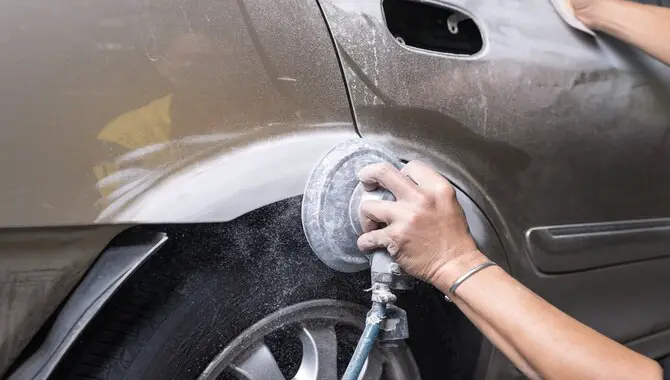
Proper preparation of surfaces is critical to ensure a flawless paint job when spray painting your car. Before proceeding with the remaining steps, begin by washing and drying your vehicle. Next, use sandpaper in circular motions to get an even surface for better paint adhesion.
Cover areas you do not want to paint using masking tape and paper before applying a primer coat. Wait until it dries completely before spraying on the main color for better coverage and adhesion. Allow ample time for the paint to dry completely before handling or driving the car.
2. Choosing The Right Location For Spray Painting
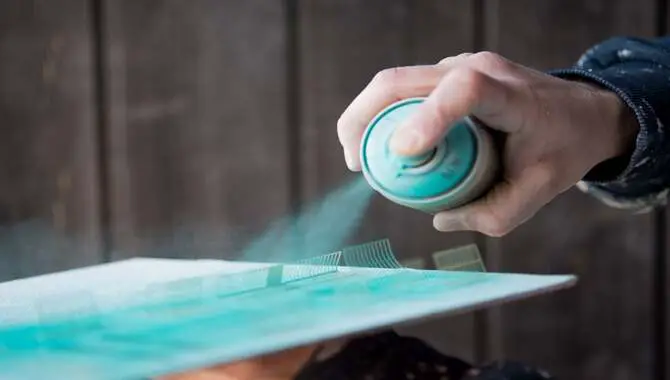
Choosing the appropriate location is critical for the best results in your spray paint job on your car’s surface. A well-ventilated workspace free from dust and debris should be your ideal choice, with good lighting and adequate ventilation.
It would be best to avoid painting in open areas as this can result in overspray and contamination of the paint surface. To protect nearby objects or other surfaces from overspray, cover them with plastic sheets or drop cloths before starting the project.
3. Removing Rust, Dents, And Trim
When preparing your car for spray painting, removing any rust using sandpaper or a wire brush is important. If you have larger areas of rust on your car’s surface, consider using an angle grinder to remove it. Don’t forget to remove any dents by filling them in with body filler and smoothing them out with sandpaper.
Make sure you also take the time to remove or tape off any trim before applying paint to avoid overspray. Lastly, don’t forget to thoroughly clean your car’s surface before spraying for optimal adhesion.
4. Sanding Your Car
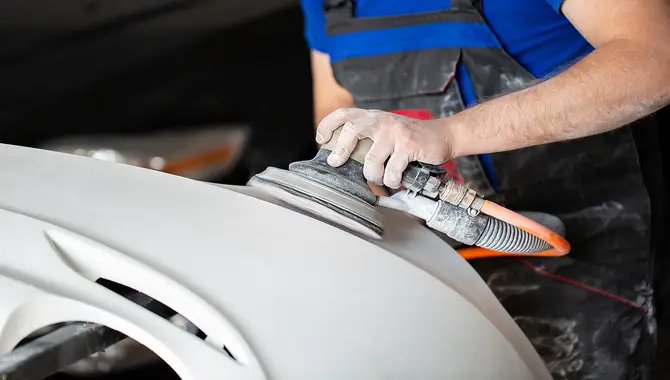
Preparing your car for spray painting includes the crucial step of sanding. This involves using sandpaper with different grits to create an even surface and remove rough patches. It’s essential to sand the entire surface of your vehicle, including tough areas like bumpers and bare metal.
Remember to use circular motions while sanding and remove all powdery residue before moving to the next step. A tack cloth can be used for this purpose. Including this step ensures adhesion and better results for your paint job.
5. Proper Sanding Techniques
Proper sanding is crucial for achieving better results while spray painting your car. Sanding requires proper techniques, such as selecting the right sandpaper grit and working in a consistent pattern. You can start with coarse grit sandpaper and gradually work towards fine grit to achieve an even surface.
While beginning with the process, make sure you remove any rust or rough spots on your car’s surface and take care not to oversand or damage the car’s surface.
6. Cleaning Your Car’s Surface
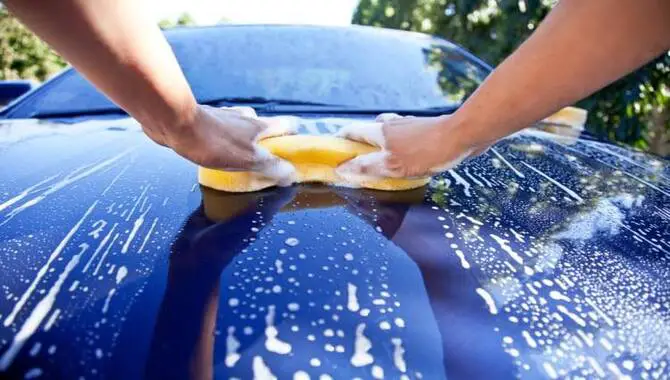
To achieve a perfect paint job on your vehicle while spray painting it, you must ensure the surface is clean and even. Begin by washing the entire surface using soap and water before removing any oil or grease residue using a suitable degreaser.
Next up is sanding; use high-quality sandpaper with different grits for better results. Always remember to wear safety gear such as gloves and goggles while sanding. Finish by wiping down the entire area with a clean rag to eliminate any debris.
7. Taping Surfaces For Protection
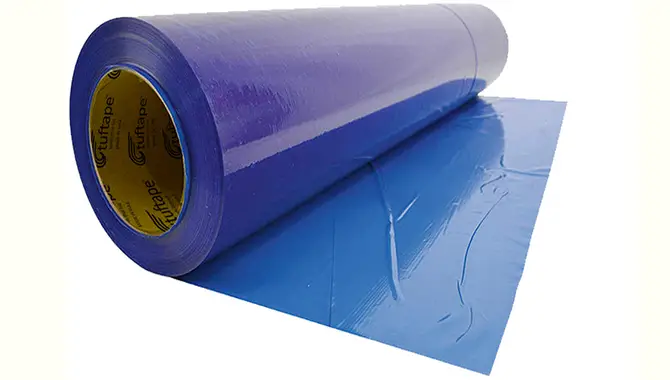
To avoid any unwanted paint on areas of the car that you don’t want to be painted, it’s essential to tape off these surfaces beforehand. Use high-quality masking tape to cover all windows, rubber trims, and other parts that require protection from the spray paint. Double-check if all surfaces are adequately covered before moving on to the next step. This step will ensure clean lines and a professional finish, giving your car a polished look.
8. Priming Your Car
Before spraying your car with paint, priming your vehicle is crucial for a smooth finish. First, thoroughly clean the entire surface using a cellulose cleaner or wax and grease remover. Next, use 2000-grit sandpaper to eliminate any scratches or imperfections on the bare metal surface of your vehicle. Rusty areas require additional attention; use a rust converter to treat them before applying the primer.
Pick a suitable primer type, such as an epoxy or urethane primer, and apply it evenly with a spray gun or aerosol can in three coats. Be careful not to overspray or leave orange peel texture on the surface by keeping an even distance from the car while spraying and going side-to-side until you’ve covered all areas of your car’s surface.
9. Applying The Primer
To achieve better results while priming your car for spray painting, choose an automotive primer that is compatible with your paint type. Apply thin coats of primer using a spray gun or aerosols and allow each coat to dry completely before applying the next one.
Use a sanding block with 2000-grit sandpaper between coats for an even surface. This will help prevent orange peel or overspray. Also, remember to wear safety glasses and use a respirator when working with paint fumes.
10. Curing Time For Primers
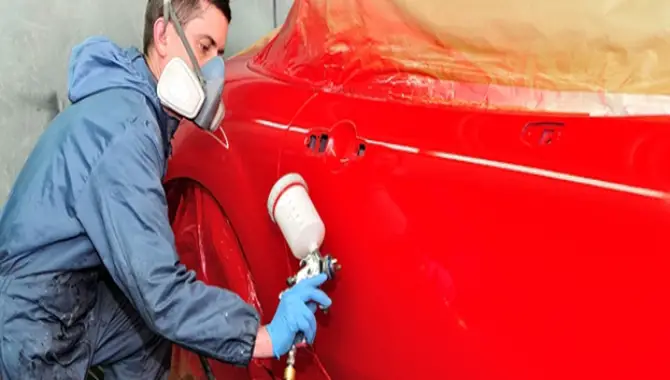
When spray painting a car, remember the importance of primer curing time. Various factors, such as humidity and temperature, can affect the time required for proper curing. Following the manufacturer’s instructions for curing times is critical in allowing the primer to adhere correctly with no color mismatch or orange peel effect.
After waiting patiently for at least 24 hours for your primer to cure completely and provide an even surface as a base coat, you can spray the topcoat evenly in side-to-side motions avoiding overspray.
11. Sanding Once Again
Achieving a flawless paint job on your car requires proper preparation, including careful sanding. Start by using high-grit sandpaper to eliminate any rough patches or imperfections from the surface of your vehicle. Once you’re done with sanding, use a clean rag to wipe away any debris or powdery residue left behind.
Afterward, apply a high-quality automotive primer in thin and even coats while allowing each layer to dry completely before moving forward. Priming your car properly and creating an even surface for the new color to adhere to will ensure better results.
12. Wiping Down And Preparing For Paint
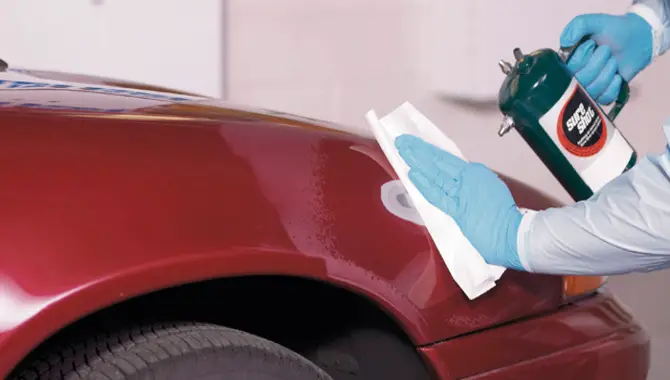
For preparing your car before spray painting, start by wiping down the entire surface of your vehicle with a clean rag or cellulose sponge to remove any powdery residue or dirt. Ensure all grease and wax are removed using mineral spirits or rubbing alcohol.
Afterward, use 2000-grit sandpaper in circular motions to rough up the surfaces of your vehicle slightly and ensure an even surface for the base coat. Before proceeding with priming, use masking tape and plastic sheets to cover adjacent areas that won’t be painted. This preparation helps prevent color mismatch and overspray.
13. Painting Your Car
Now that you have completed all the necessary prep work, it’s time to start painting your car. Once you have your topcoat ready, shake the can well and test spray on a piece of cardboard to ensure consistency and avoid dripping. Start spraying at the top of your vehicle in side-to-side motions while holding the can about 6-8 inches away from the surface.
Apply thin coats and give ample time for each layer to dry before applying the next one. Remember to avoid overspray by using a sweeping motion across the surface of your vehicle and keeping your spray gun moving constantly.
14. Sanding And Wiping
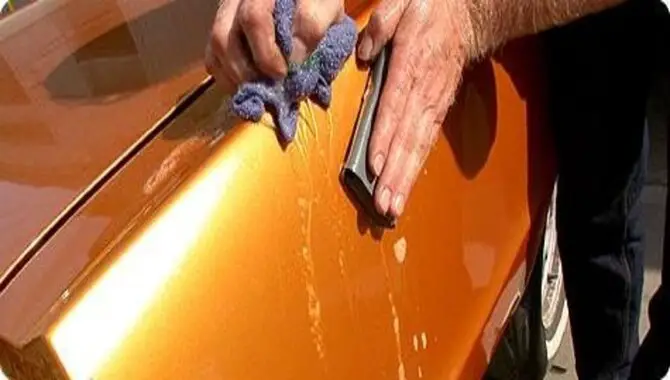
A smooth and professional-looking paint job on your car requires proper sanding and wiping. Start by using fine-grit sandpaper in circular motions to eliminate all rough spots and imperfections from the surfaces of your vehicle.
Then wipe down surfaces with a clean rag, microfiber towel, lint-free cloth or tack cloth to remove powdery residue and debris left from sanding. Remember that an even surface gives better results when spray painting your car.
15. Adding Clearcoat And Lacquer
When applying clearcoat and lacquer to your vehicle’s paint job, it is important to take certain steps. Firstly, ensure you choose the correct type of clearcoat or lacquer for your automobile. Secondly, when applying these coatings to the automobile’s surface, do so in a well-ventilated area while taking proper safety measures into consideration.
Finally, when using an aerosol can or spray gun to apply the product, utilize even strokes and cover every inch of the vehicle for better results.
16. Removing Masking Tape And Buffing
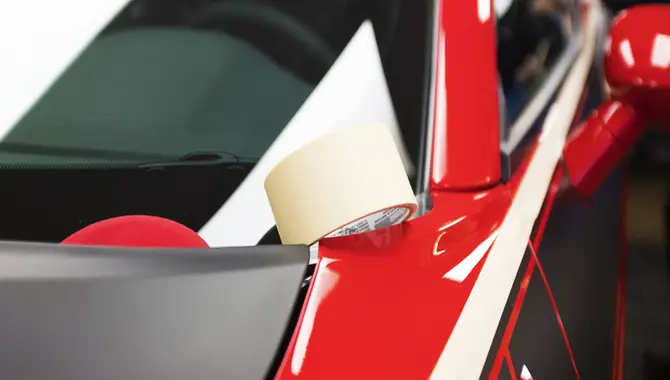
After painting your car, removing all masking tape carefully is crucial to avoiding damage to the new paint job. To get an even surface without any bumps or residue left by masking tape after removal, it’s important to use a rubbing compound or wax. Buffing your car with a polishing pad will help restore shine and remove any powdery residue. Take your time and work in circular motions for better results.
17. Applying The Spray Paint
For best results when applying spray paint to your car, ensure the surface is properly cleaned and sanded beforehand. Using long and even strokes when spraying, remember to apply multiple thin layers rather than one thick layer.
Using proper protective gear like safety glasses and masks while working with spray paint is important. Ensure that you use an appropriate type of automotive paint for your vehicle and work in a well-ventilated environment free from any flammable substances or sparks.
How To Avoid Common Mistakes In Car Spray Painting
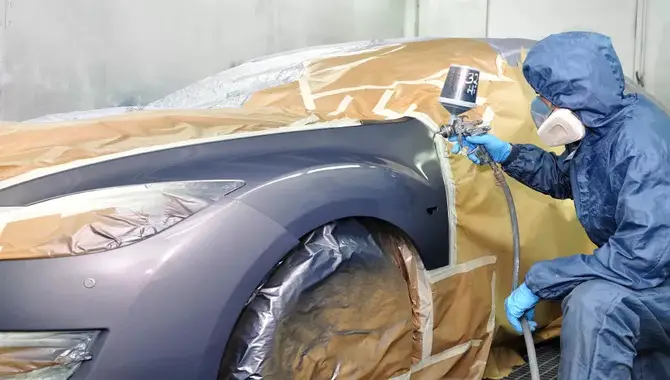
Avoiding common mistakes is crucial for a perfect finish when spray painting a car. To start with, make sure that you have cleaned and sanded the surface of your vehicle properly. Also, use the right paint according to manufacturer instructions and apply multiple thin coats rather than one thick coat to prevent drips and uneven coverage.
Allow each coat to dry entirely before adding another layer or handling your car. Lastly, practice on smaller areas first and take safety precautions like wearing safety glasses or gloves for better results.
Conclusion
Spray painting a car can be time-consuming and challenging, but the right tools and techniques can achieve professional-looking results. Whether you are restoring an old car or looking to give your current ride a fresh new look, spray paint can be a fun and rewarding DIY project.
Spray painting a car is an art form that requires patience, attention to detail, and careful planning. From preparing your car to applying the finishing touches, every step in the process matters. With this beginner’s guide, you have all the information you need to start your DIY spray painting project.
Remember to take your time, follow the ways carefully, and avoid common mistakes like using too much paint or not allowing enough drying time between coats. By following these tips how to spray paint a car and taking care of your car’s surface, you’ll be able to achieve a professional finish that will impress everyone who sees it.
Frequently Asked Questions
1.How Do You Properly Spray Paint A Car?
Ans: Start by cleaning and sanding the surface for a successful car spray painting. Use a primer to help the paint stick, apply multiple light coats, and allow each coat to dry. Finally, add a clear coat for protection and a glossy finish.
2.Can I Spray Paint My Car Without Sanding?
Ans: Spray painting a car without sanding is possible but not advisable. Sanding helps the paint stick to the surface and creates a polished look. Skipping it could lead to patchy color, rough texture, and peeling paint. Preparing the surface correctly is crucial for optimal results.
3.What Safety Precautions Should I Take Before Spray Painting A Car?
Ans: Before spray painting a car, take safety precautions such as wearing protective clothing, ensuring proper ventilation, and covering areas you don’t want to be painted. Additionally, keep a fire extinguisher nearby in case of accidents that could occur during the process.
4.What Equipment Do I Need To Successfully Spray Paint My Car?
Ans: Spray painting a car requires a spray gun, air compressor, and paint materials such as primer, base coat, and clear coat. Safety equipment like goggles, gloves, and a respirator is crucial. Adequate preparation tools like sandpaper, masking tape, and plastic sheeting must be used. Follow the manufacturer’s instructions for all equipment and materials to ensure success.
5.Is It Necessary To Have Professional Experience Or Training To Successfully Spray Paint A Car?
Ans: Although professional experience or training is not required to spray paint a car, it is advisable to practice on a small area first. Proper surface preparation, safety precautions, and using the right equipment are key to achieving a smooth finish.

I am passionate about writing blogs about bikes. I love riding my bike and love talking about it even more. My blog is the perfect place for anyone who loves biking as much as I do. Come check it out and learn some tips and tricks from me!